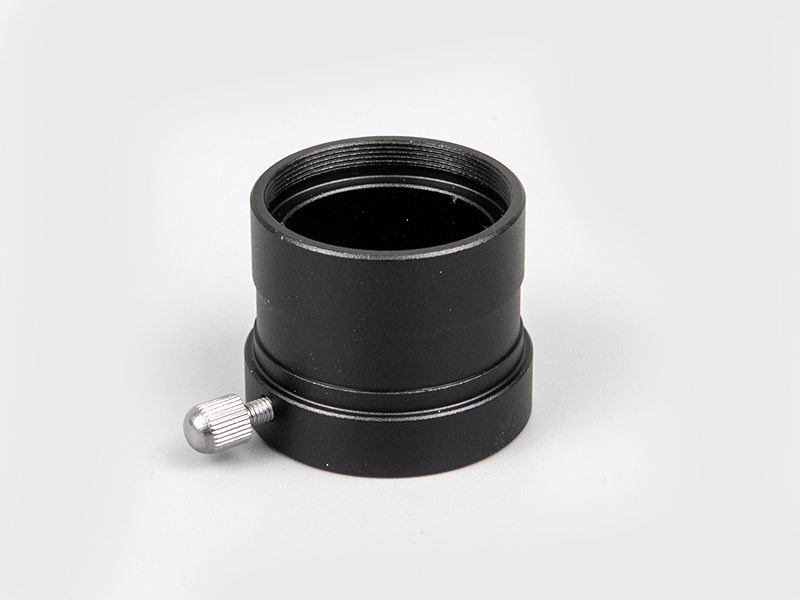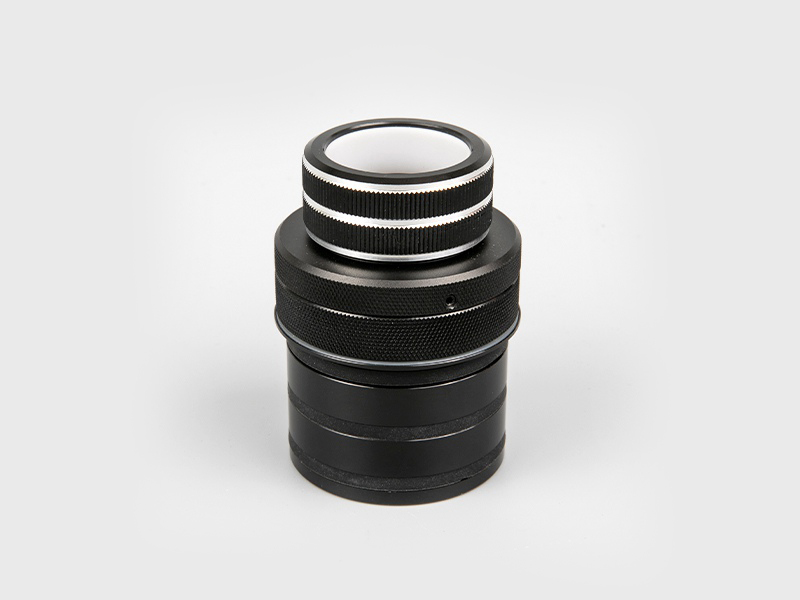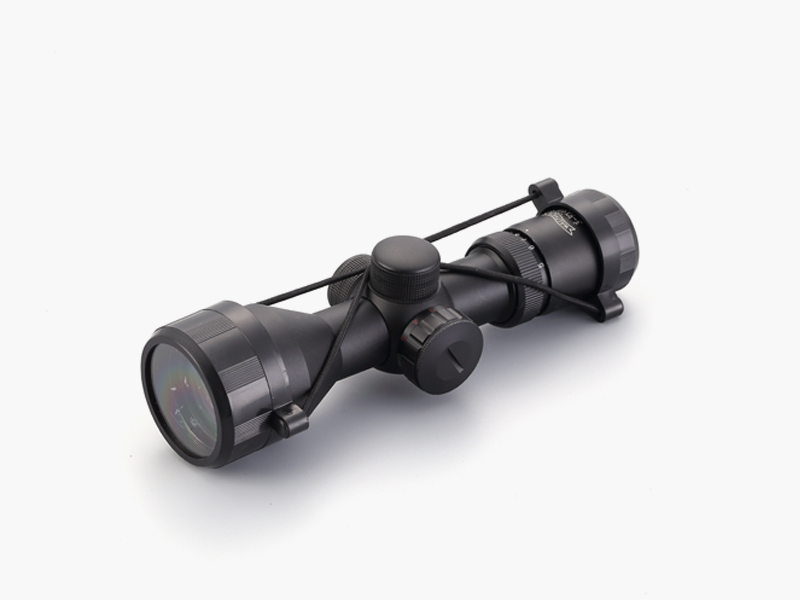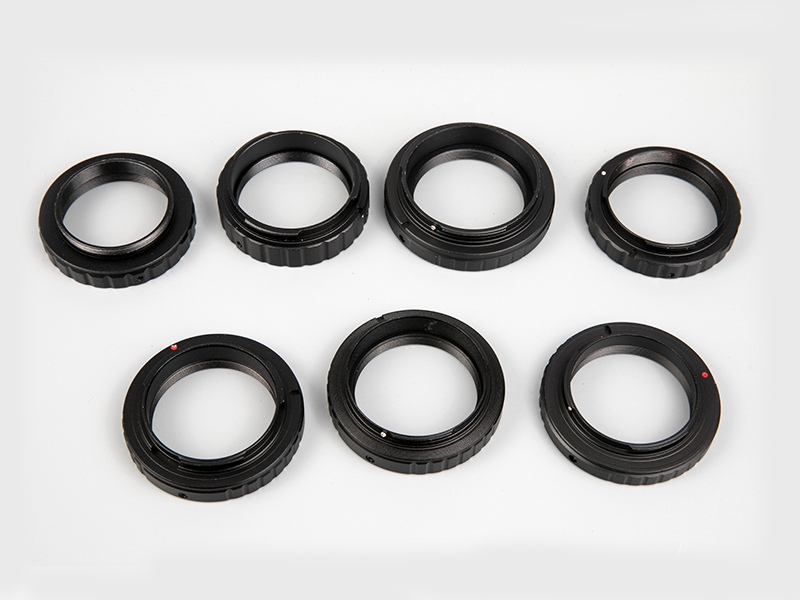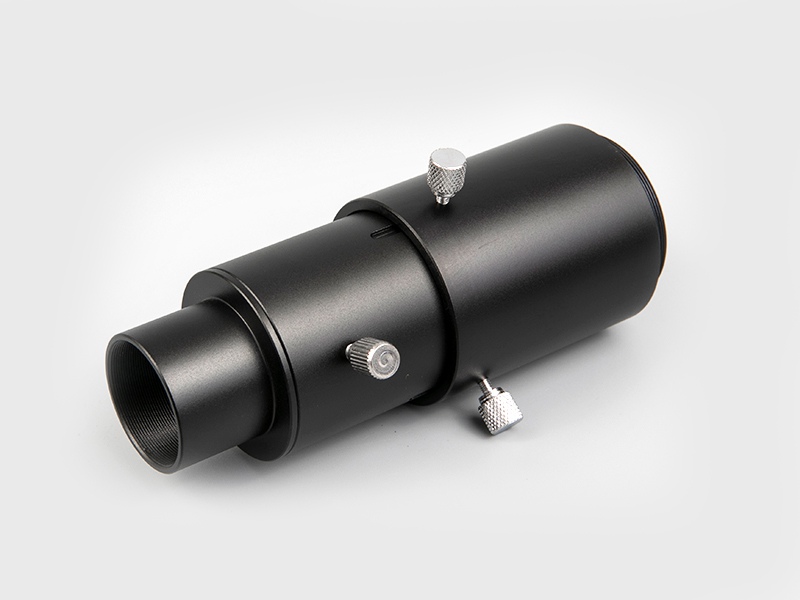Some properties of eyepieces are very important to the function of optical products, and comparisons are needed to determine the most suitable eyepieces.
The entrance pupil of the eyepiece is always designed outside the optical system of the eyepiece, and they must be designed to have excellent performance at a specific distance (that is, the deformation at this distance is minimal). In a refractive astronomical telescope, the entrance pupil is usually very close to the objective lens and is usually a few feet away from the eyepiece; in a microscope, the entrance pupil is usually close to the back focal plane of the objective lens and is only a few inches away from the eyepiece. Therefore, the nature of the eyepiece of the microscope and the eyepiece of the telescope are different, and proper performance can be obtained without interchange.
Each individual lens is called an element, usually a simple lens, which can be combined into a single lens, a cemented double lens or a triplet lens. When these elements are bonded together by two or three, the combination becomes a group.
The first eyepiece is just a single lens element, and the resulting image has a high degree of distortion. After the design of two or three elements was invented, it quickly became a standard design due to the improved image quality. Today, the engineer's design with the assistance of a computer provides an excellent image with seven or eight elements.
Internal reflection is sometimes called scattering, which causes the light passing through the eyepiece to not only be scattered but also reduces the contrast of the image produced by the eyepiece. When the effect of the image is poor, "ghost images" appear, called ghost images. For many years, creating a small air gap between glass and glass in the design can effectively improve this problem.
For thin lenses, coating on the surface of the element can be used to solve this problem. This film with a thickness of only one or two wavelengths can change the refraction of light passing through the elements to reduce reflection and scattering. Some coatings can absorb these rays of light incident at a low angle through the process of total reflection, so that they will not pass through the lens.
Chromatic aberration occurs because different colors (wavelengths) from one medium to another have different refractive indices. For eyepieces, the chromatic aberration comes from the interface between the air and glass. The blue and red light cannot be at the same focal point after passing through the elements of the eye diameter. This phenomenon may result in a fuzzy color ring surrounding the focal point for point light sources, and the usual result is blurred images.
There are several ways to alleviate this problem, one is to use a thin film to correct the element of the eyepiece. The more traditional method is to use multiple elements of different glass and curvature to reduce deformation.
Longitudinal chromatic aberration is a significant effect in optical telescopes because the focal length is very long; in microscopes, because the general focal length is very short, it is not affected by this effect.
Usually, when the eyepiece improves chromatic aberration, both of these need to be corrected.
The focal length is the distance between the point where the parallel light passes through the eyepiece and the main plane of the eyepiece. In use, the combination of the eyepiece focal length and the objective lens focal length determines the attached magnification. When referring to the eyepiece alone, its unit is usually millimeters (mm); and when using an instrument that can replace the eyepiece, some users like to use the magnification that can be obtained through the eyepiece as the unit.
For telescopes, some special eyepieces can produce different angular magnifications, and the combined magnification of the telescope and microscope can be calculated by the following formula: MA is the angular magnification to be calculated, fO is the focal length of the telescope objective lens, and fE is The focal length of the eyepiece should be expressed in the same unit of measurement. fT for a compound microscope is the closest photopic distance (usually 250mm), DEO is the distance between the back focal plane of the objective lens and the back focal plane of the eyepiece (called the tube length). On modern instruments The overall length of this distance is 160mm. O is the focal length of the objective lens, and FE is the focal length of the eyepiece. Therefore, to increase the magnification, you can shorten the focal length of the eyepiece or lengthen the focal length of the instrument itself. For example, an eyepiece with a focal length of 25mm is used on a telescope with a focal length of 1200mm, and the magnification is 48 times; an eyepiece with a focal length of 4mm is used on the same telescope, and the magnification is 300 times.
The eyepieces of the telescopes used by amateur astronomers tend to indicate the focal length. In astronomy, the unit of focal length is usually millimeters (mm), and the range is between 3 and 50 mm. The actual magnification depends on the focal length of the telescope used.
However, when describing observational phenomena, astronomers are accustomed to marking the eyepiece with magnification instead of the focal length of the eyepiece. It is more convenient to use magnification in the observation report, because it more directly reminds the observer of what the observer actually sees. Since the magnification depends on the telescope used, it is meaningless to mention the magnification alone for the eyepiece of the telescope.
According to the agreement, the eyepiece of the microscope usually indicates a specific magnification instead of the focal length. The magnification of the microscope PE and the magnification of the objective lens PO, therefore, the expression of the front-end angle magnification of a compound microscope is:
The definition of magnification is based on the ability of the instrument to be magnified between the eyepiece and the objective lens for any easy separation angle. Different from the historical analysis of microscope eyepieces, it is based on the magnification of the eyepiece to the angle and the original magnification ability of the objective lens. This is very convenient for optical designers, but it lacks convenience from the practical point of view of microscopy, so it was abandoned. General eyepiece magnifications are 8X, 10X, 15X, and 20X. These magnifications are compared with the shortest photopic distance that a normal person can see clearly, D250mm, so the focal length of the eyepiece can be calculated by dividing 250mm by the magnification. Although the accepted standard distance is 250mm, the current microscope will be designed with a focal length of only 160mm, making the instrument very compact. Today's instruments may also be designed so that the tube is actually infinitely long (using an auxiliary lens in the barrel). The angular magnification of the entire microscope image is the product of the magnification of the eyepiece and the magnification of the objective lens. For example, a combination of a 10X eyepiece and a 40X objective lens will result in a 400X magnification.
Some eyepieces, such as Ransden eyepieces, have a focal plane located in front of the field lens outside the eyepieces, so they are very suitable for placement of reticles or micrometers. In the Huygens eyepiece, the focal plane is located between the eye and the field lens in the eyepiece, which is not easily accessible.
Field of view, often used the abbreviation FOV, describes the target that can be seen through the eyepiece (the angle measured from the location of the observer). The field of view of the eyepiece varies according to the magnification of the telescope or microscope combined with each other, and is also related to the nature of the eyepiece itself. Eyepieces are distinguished by their field of view stop, which is the narrowest aperture through which light entering the eyepiece reaches the field lens.
The entrance pupil of the eyepiece is always designed outside the optical system of the eyepiece, and they must be designed to have excellent performance at a specific distance (that is, the deformation at this distance is minimal). In a refractive astronomical telescope, the entrance pupil is usually very close to the objective lens and is usually a few feet away from the eyepiece; in a microscope, the entrance pupil is usually close to the back focal plane of the objective lens and is only a few inches away from the eyepiece. Therefore, the nature of the eyepiece of the microscope and the eyepiece of the telescope are different, and proper performance can be obtained without interchange.
Each individual lens is called an element, usually a simple lens, which can be combined into a single lens, a cemented double lens or a triplet lens. When these elements are bonded together by two or three, the combination becomes a group.
The first eyepiece is just a single lens element, and the resulting image has a high degree of distortion. After the design of two or three elements was invented, it quickly became a standard design due to the improved image quality. Today, the engineer's design with the assistance of a computer provides an excellent image with seven or eight elements.
Internal reflection is sometimes called scattering, which causes the light passing through the eyepiece to not only be scattered but also reduces the contrast of the image produced by the eyepiece. When the effect of the image is poor, "ghost images" appear, called ghost images. For many years, creating a small air gap between glass and glass in the design can effectively improve this problem.
For thin lenses, coating on the surface of the element can be used to solve this problem. This film with a thickness of only one or two wavelengths can change the refraction of light passing through the elements to reduce reflection and scattering. Some coatings can absorb these rays of light incident at a low angle through the process of total reflection, so that they will not pass through the lens.
Chromatic aberration occurs because different colors (wavelengths) from one medium to another have different refractive indices. For eyepieces, the chromatic aberration comes from the interface between the air and glass. The blue and red light cannot be at the same focal point after passing through the elements of the eye diameter. This phenomenon may result in a fuzzy color ring surrounding the focal point for point light sources, and the usual result is blurred images.
There are several ways to alleviate this problem, one is to use a thin film to correct the element of the eyepiece. The more traditional method is to use multiple elements of different glass and curvature to reduce deformation.
Longitudinal chromatic aberration is a significant effect in optical telescopes because the focal length is very long; in microscopes, because the general focal length is very short, it is not affected by this effect.
Usually, when the eyepiece improves chromatic aberration, both of these need to be corrected.
The focal length is the distance between the point where the parallel light passes through the eyepiece and the main plane of the eyepiece. In use, the combination of the eyepiece focal length and the objective lens focal length determines the attached magnification. When referring to the eyepiece alone, its unit is usually millimeters (mm); and when using an instrument that can replace the eyepiece, some users like to use the magnification that can be obtained through the eyepiece as the unit.
For telescopes, some special eyepieces can produce different angular magnifications, and the combined magnification of the telescope and microscope can be calculated by the following formula: MA is the angular magnification to be calculated, fO is the focal length of the telescope objective lens, and fE is The focal length of the eyepiece should be expressed in the same unit of measurement. fT for a compound microscope is the closest photopic distance (usually 250mm), DEO is the distance between the back focal plane of the objective lens and the back focal plane of the eyepiece (called the tube length). On modern instruments The overall length of this distance is 160mm. O is the focal length of the objective lens, and FE is the focal length of the eyepiece. Therefore, to increase the magnification, you can shorten the focal length of the eyepiece or lengthen the focal length of the instrument itself. For example, an eyepiece with a focal length of 25mm is used on a telescope with a focal length of 1200mm, and the magnification is 48 times; an eyepiece with a focal length of 4mm is used on the same telescope, and the magnification is 300 times.
The eyepieces of the telescopes used by amateur astronomers tend to indicate the focal length. In astronomy, the unit of focal length is usually millimeters (mm), and the range is between 3 and 50 mm. The actual magnification depends on the focal length of the telescope used.
However, when describing observational phenomena, astronomers are accustomed to marking the eyepiece with magnification instead of the focal length of the eyepiece. It is more convenient to use magnification in the observation report, because it more directly reminds the observer of what the observer actually sees. Since the magnification depends on the telescope used, it is meaningless to mention the magnification alone for the eyepiece of the telescope.
According to the agreement, the eyepiece of the microscope usually indicates a specific magnification instead of the focal length. The magnification of the microscope PE and the magnification of the objective lens PO, therefore, the expression of the front-end angle magnification of a compound microscope is:
The definition of magnification is based on the ability of the instrument to be magnified between the eyepiece and the objective lens for any easy separation angle. Different from the historical analysis of microscope eyepieces, it is based on the magnification of the eyepiece to the angle and the original magnification ability of the objective lens. This is very convenient for optical designers, but it lacks convenience from the practical point of view of microscopy, so it was abandoned. General eyepiece magnifications are 8X, 10X, 15X, and 20X. These magnifications are compared with the shortest photopic distance that a normal person can see clearly, D250mm, so the focal length of the eyepiece can be calculated by dividing 250mm by the magnification. Although the accepted standard distance is 250mm, the current microscope will be designed with a focal length of only 160mm, making the instrument very compact. Today's instruments may also be designed so that the tube is actually infinitely long (using an auxiliary lens in the barrel). The angular magnification of the entire microscope image is the product of the magnification of the eyepiece and the magnification of the objective lens. For example, a combination of a 10X eyepiece and a 40X objective lens will result in a 400X magnification.
Some eyepieces, such as Ransden eyepieces, have a focal plane located in front of the field lens outside the eyepieces, so they are very suitable for placement of reticles or micrometers. In the Huygens eyepiece, the focal plane is located between the eye and the field lens in the eyepiece, which is not easily accessible.
Field of view, often used the abbreviation FOV, describes the target that can be seen through the eyepiece (the angle measured from the location of the observer). The field of view of the eyepiece varies according to the magnification of the telescope or microscope combined with each other, and is also related to the nature of the eyepiece itself. Eyepieces are distinguished by their field of view stop, which is the narrowest aperture through which light entering the eyepiece reaches the field lens.


 English
English 日本語
日本語 Deutsche
Deutsche España
España

